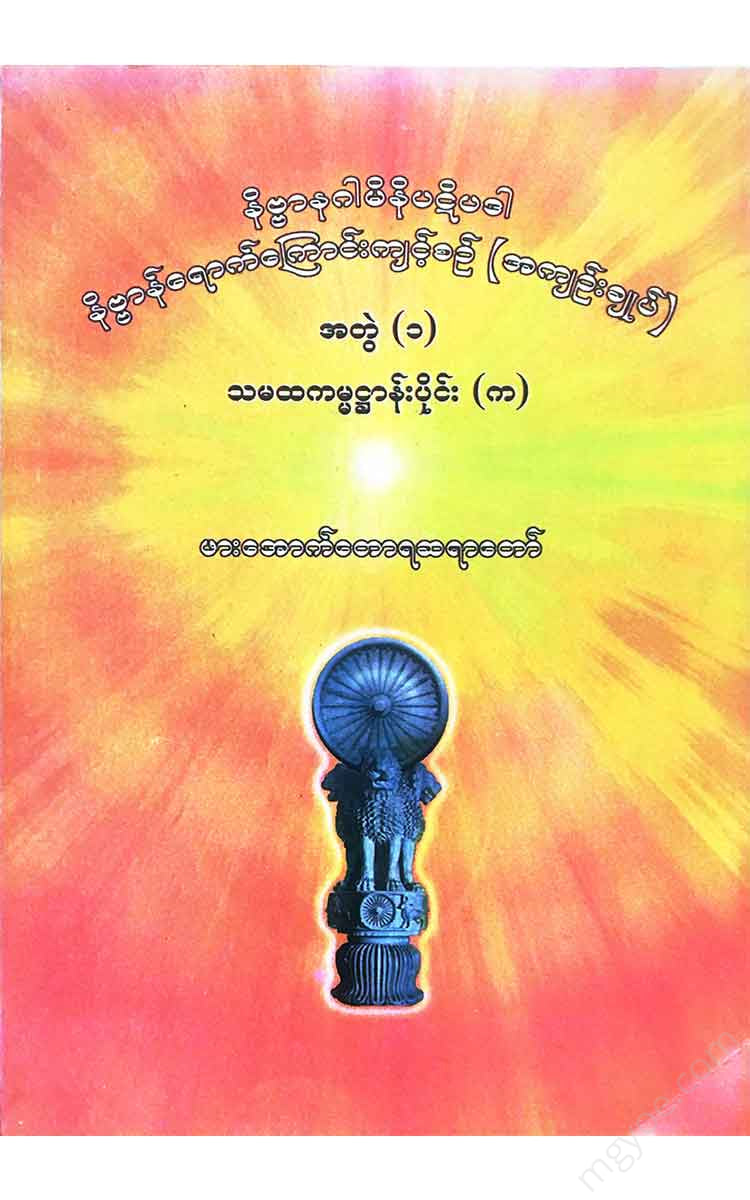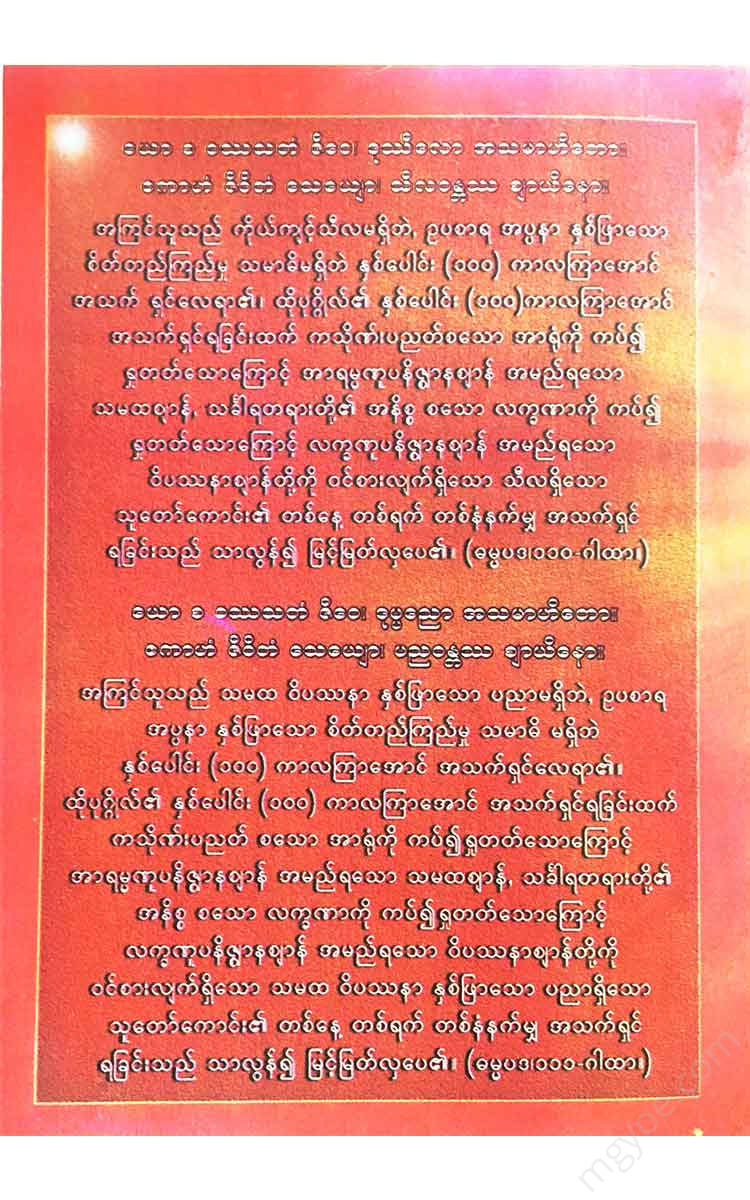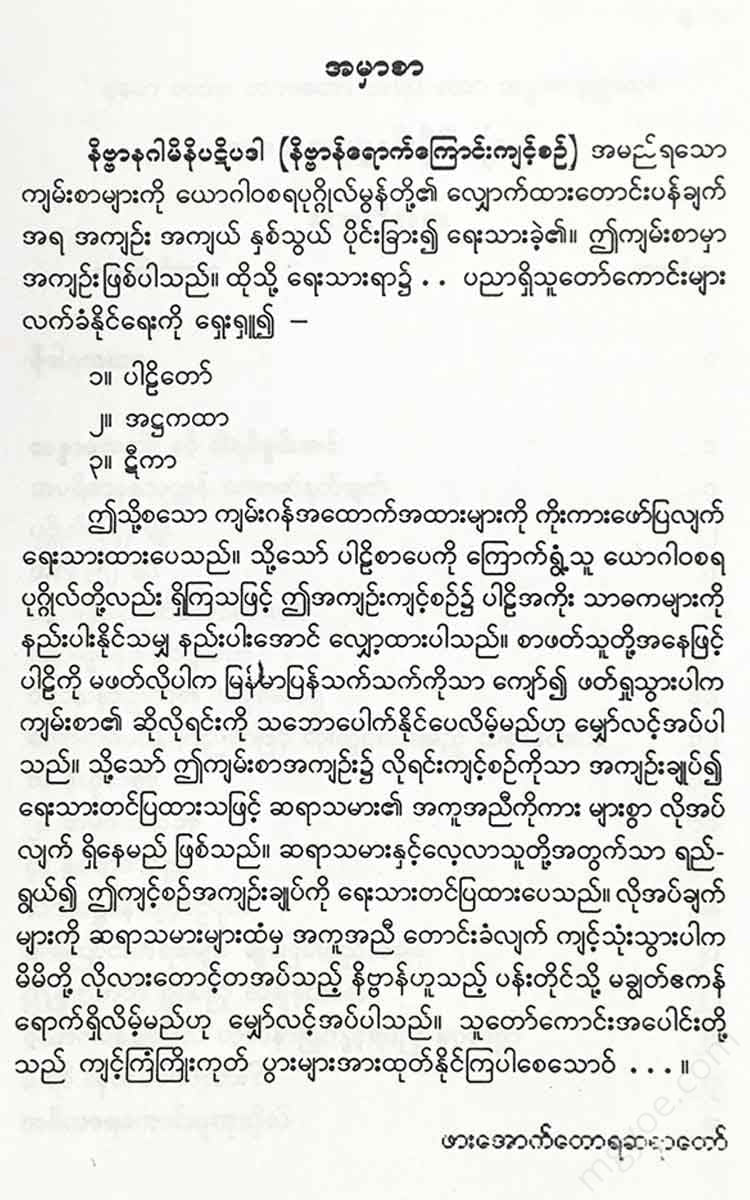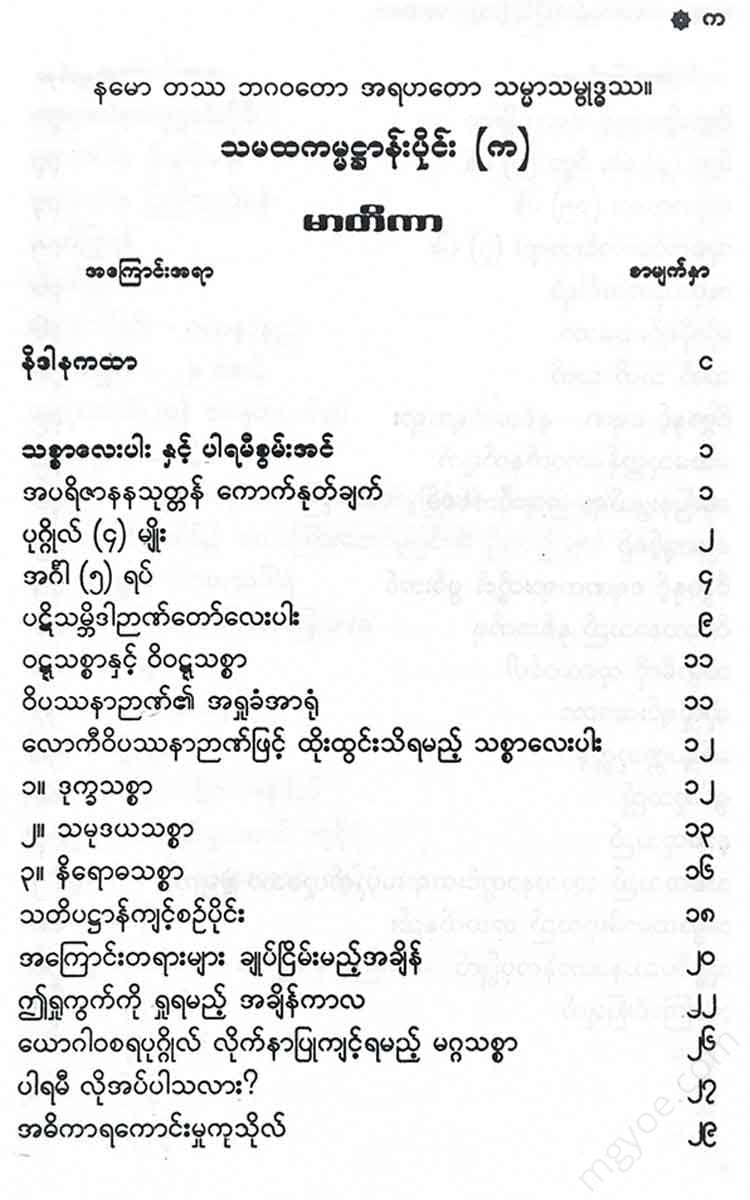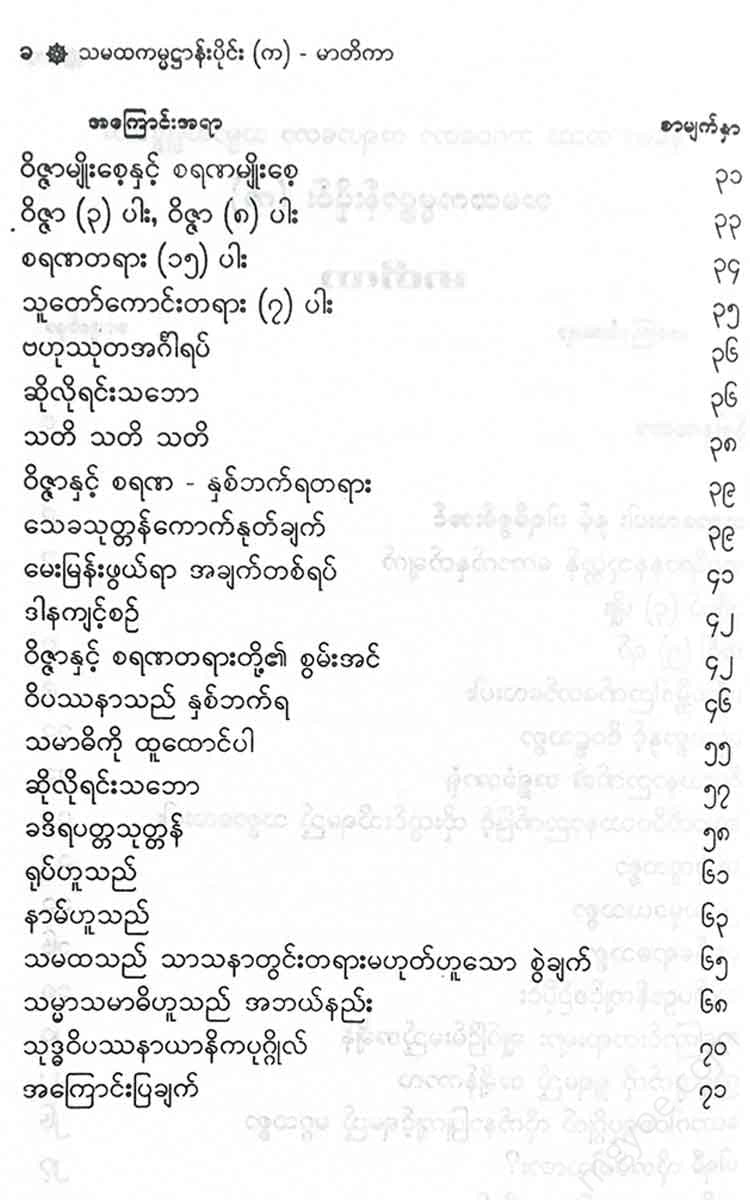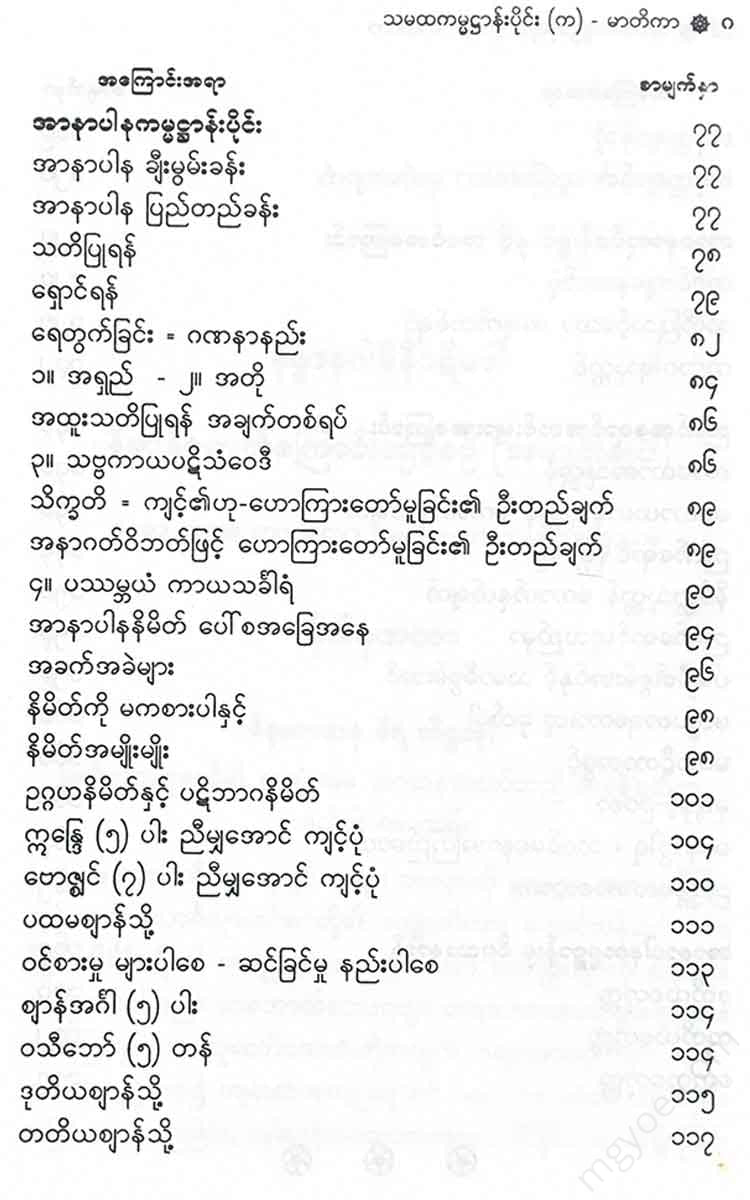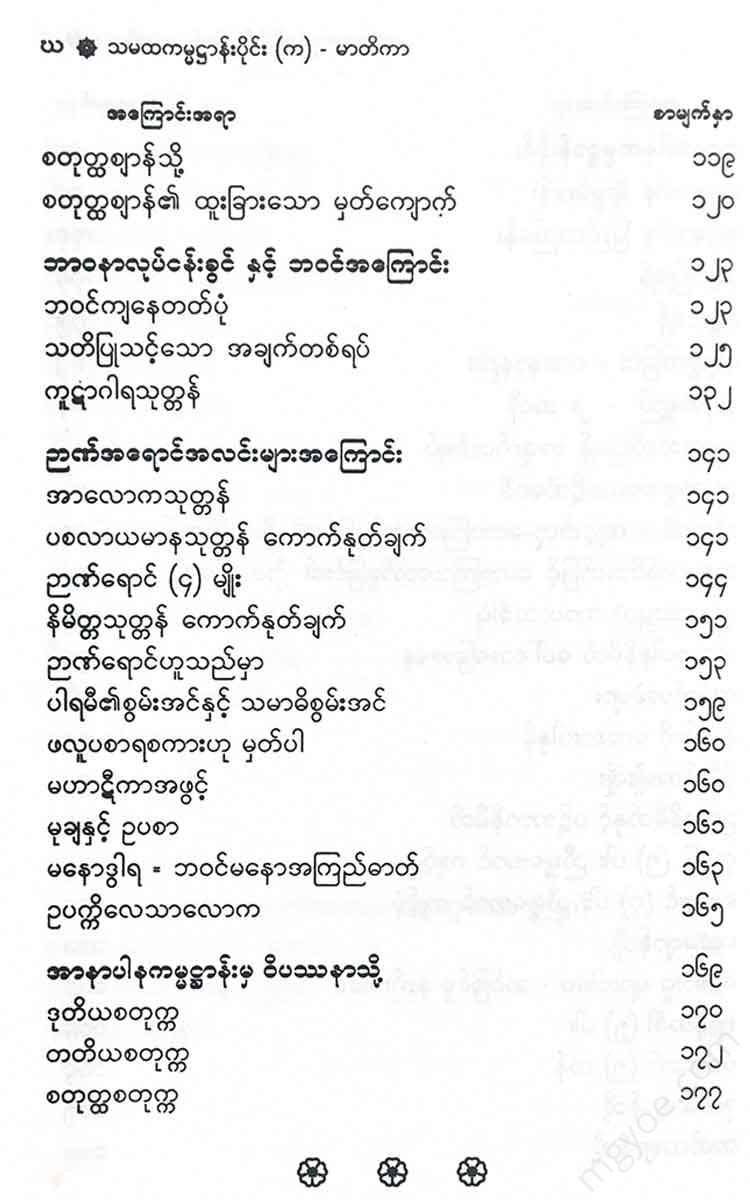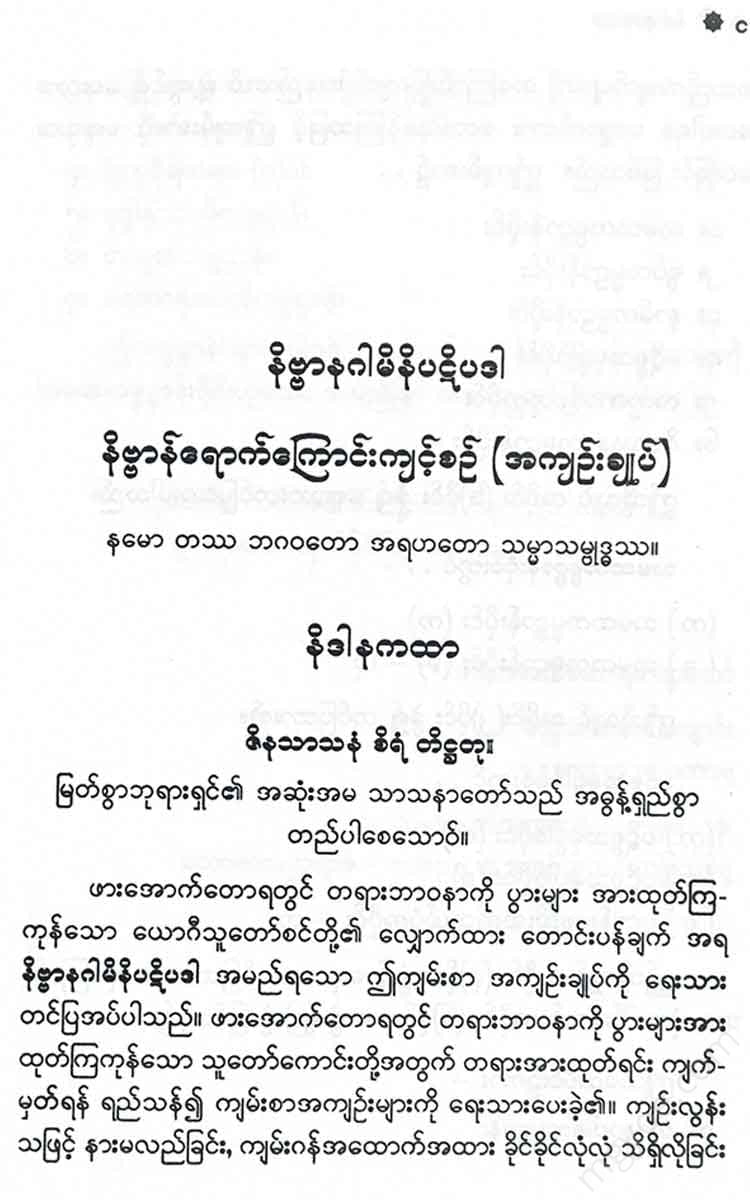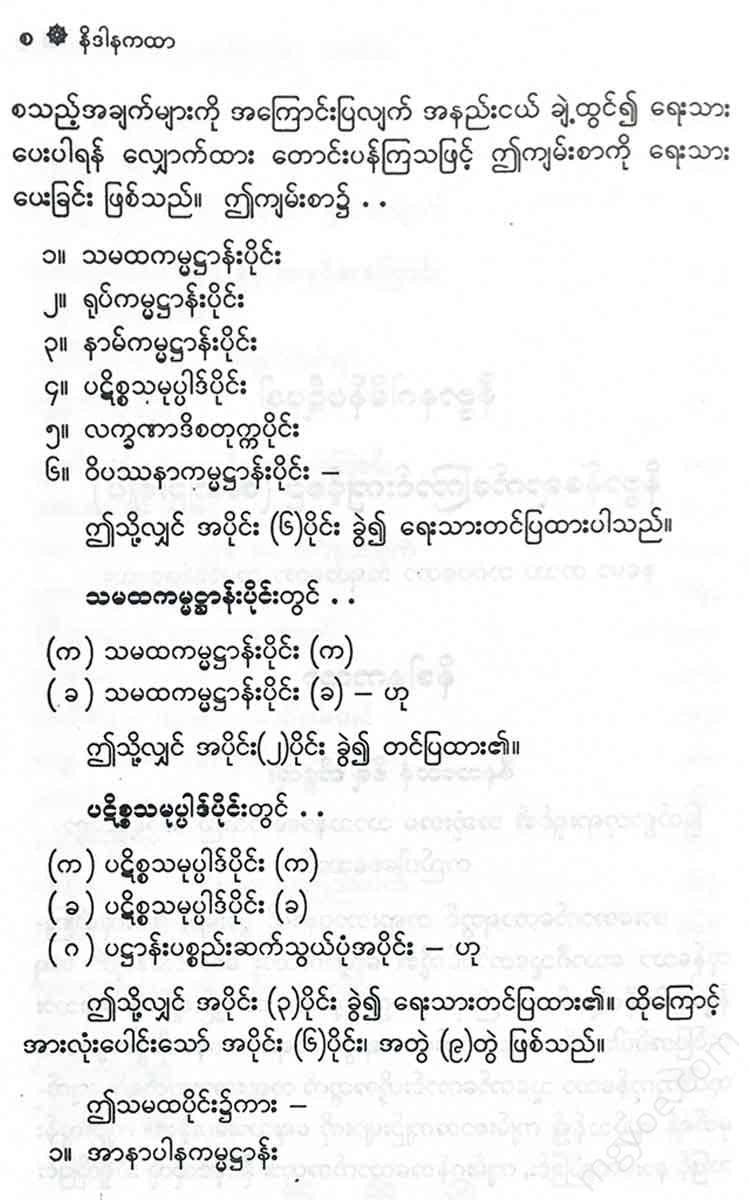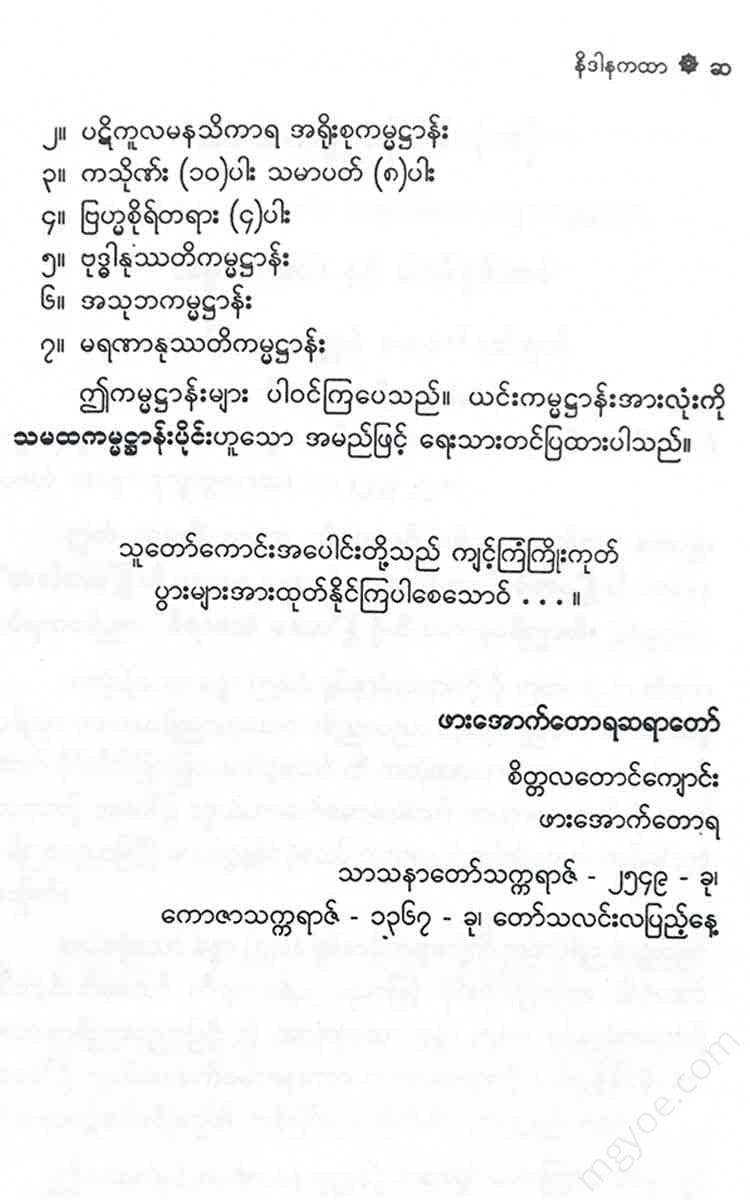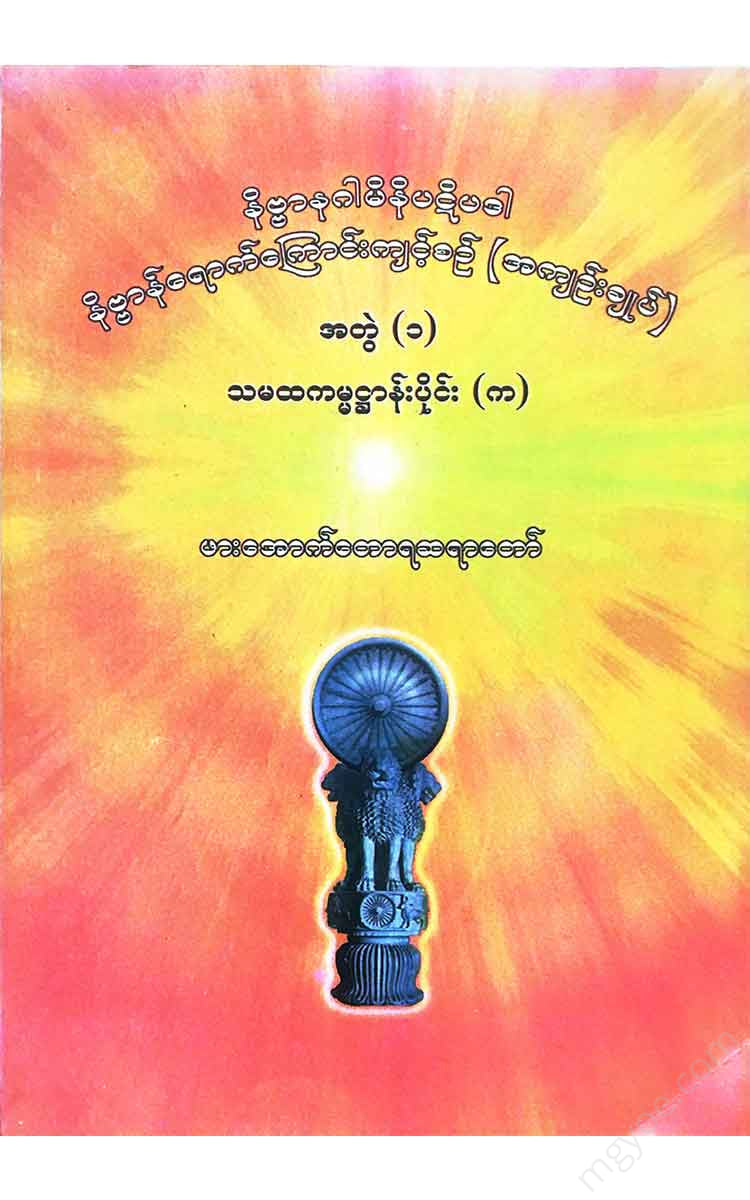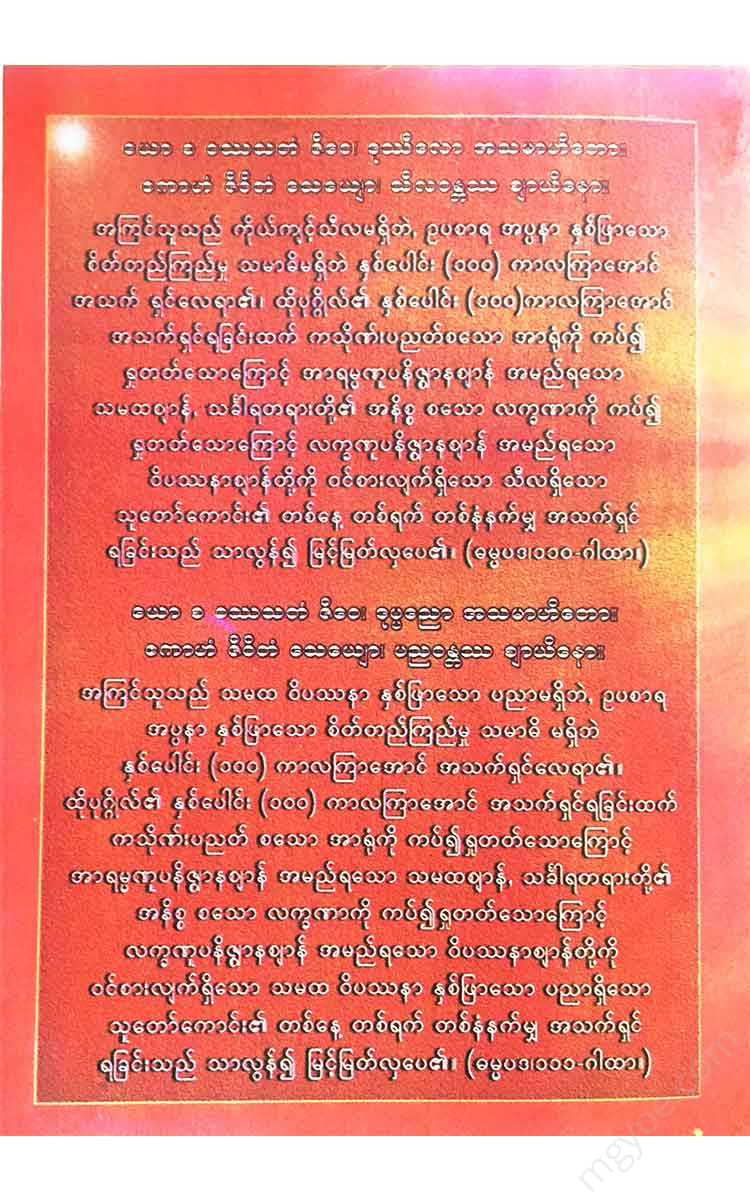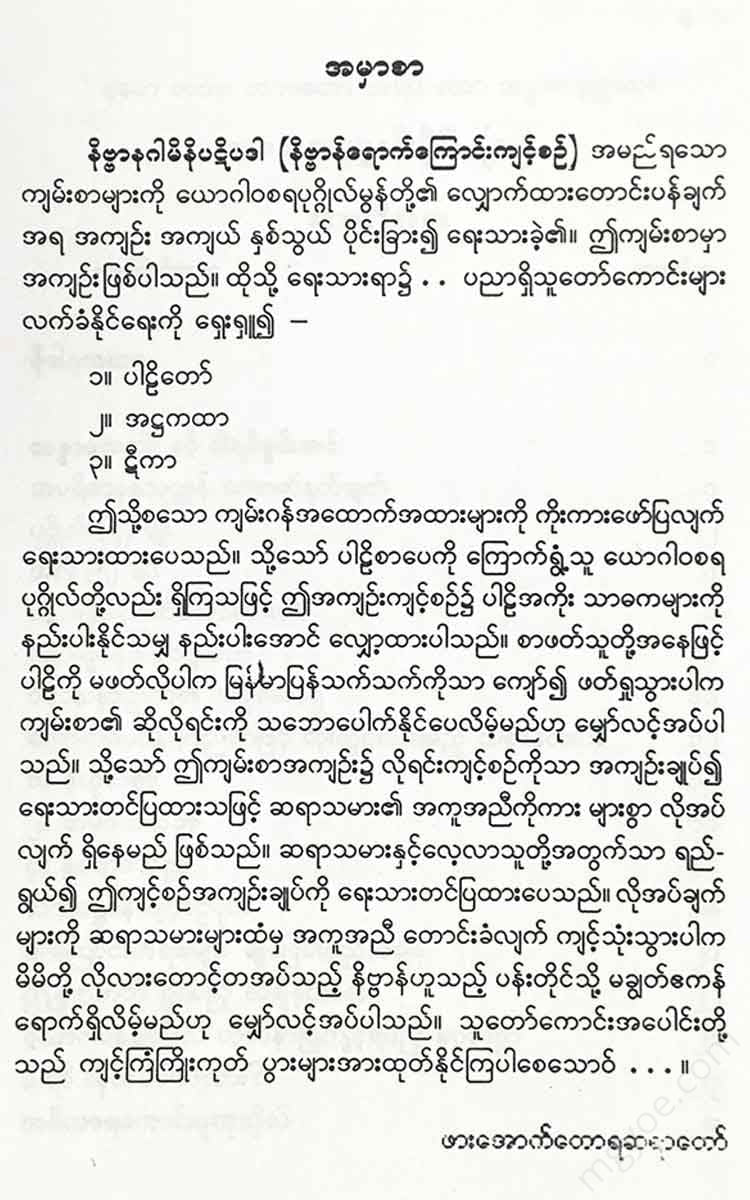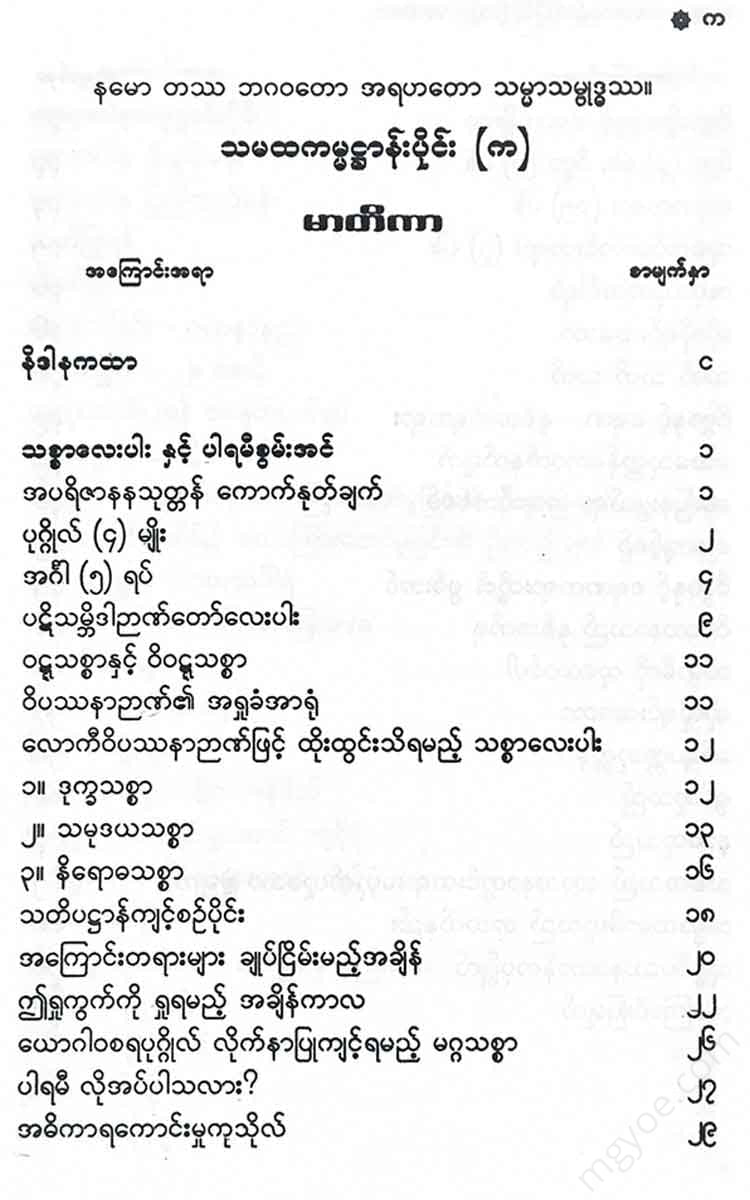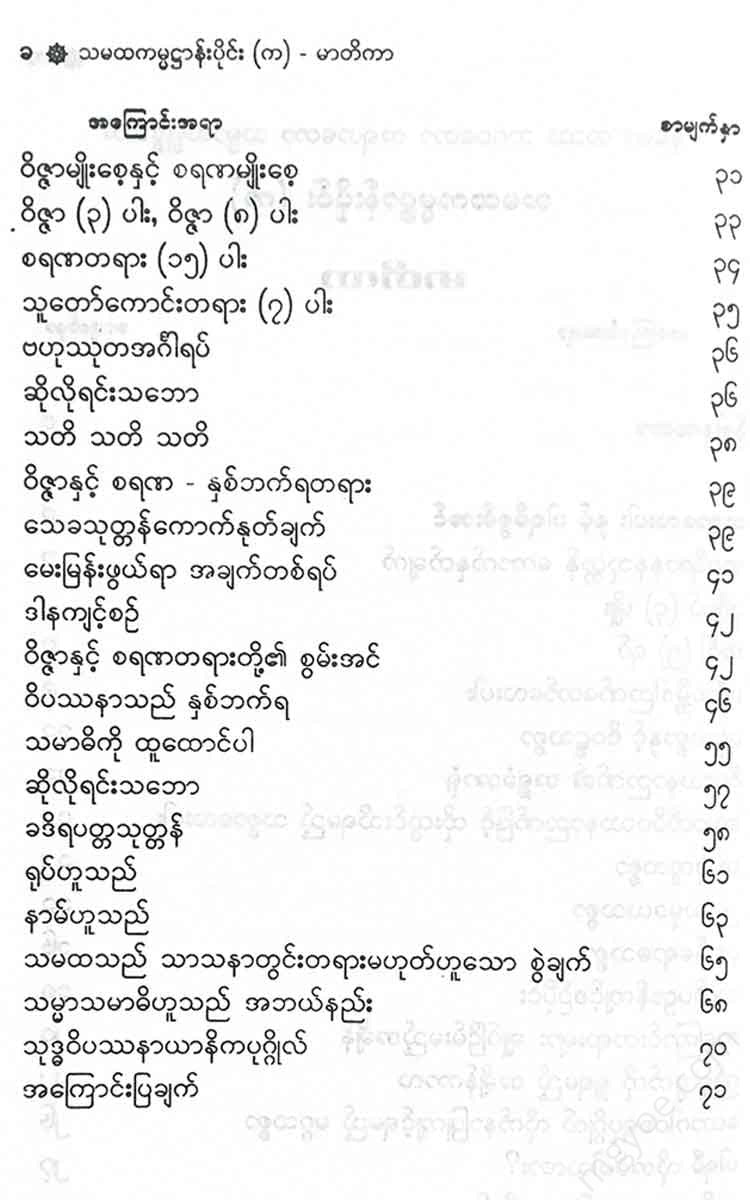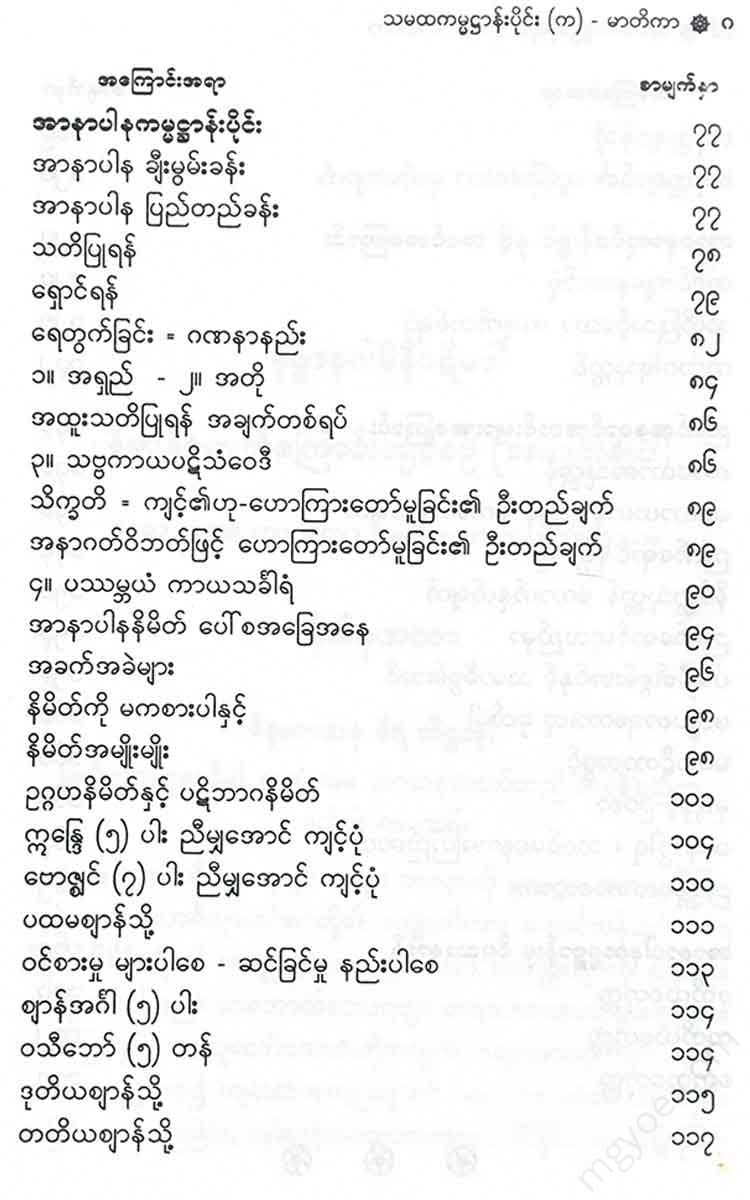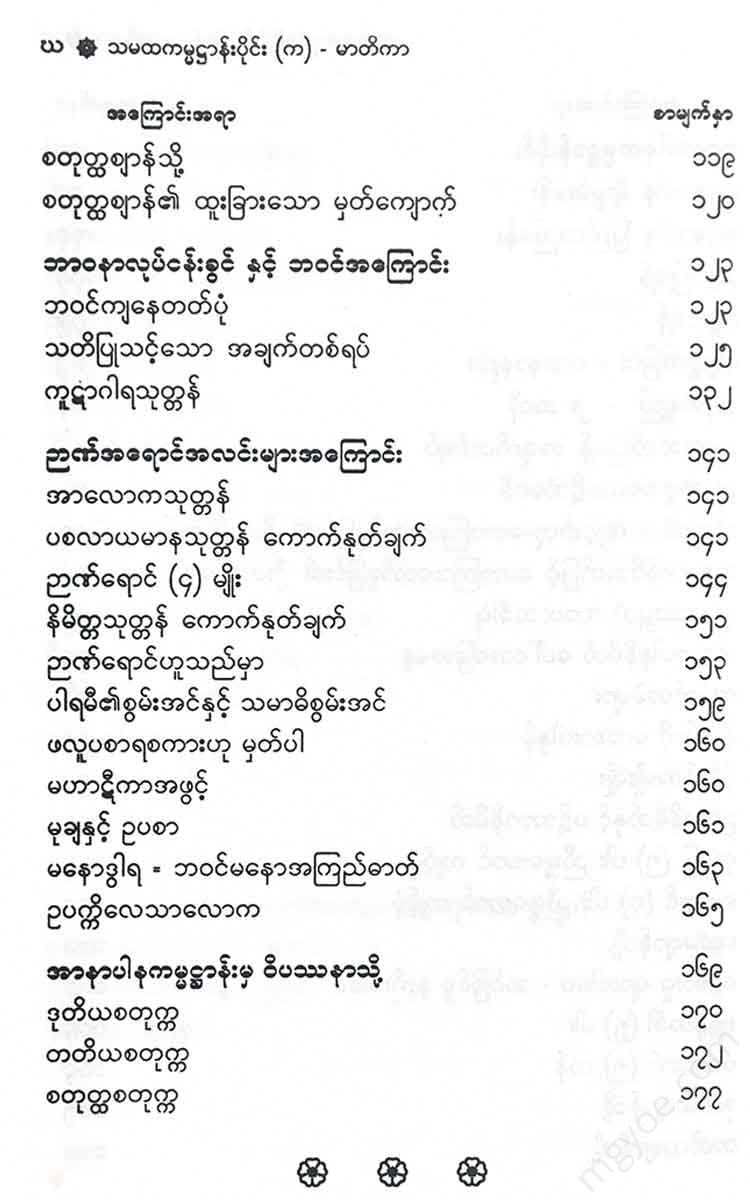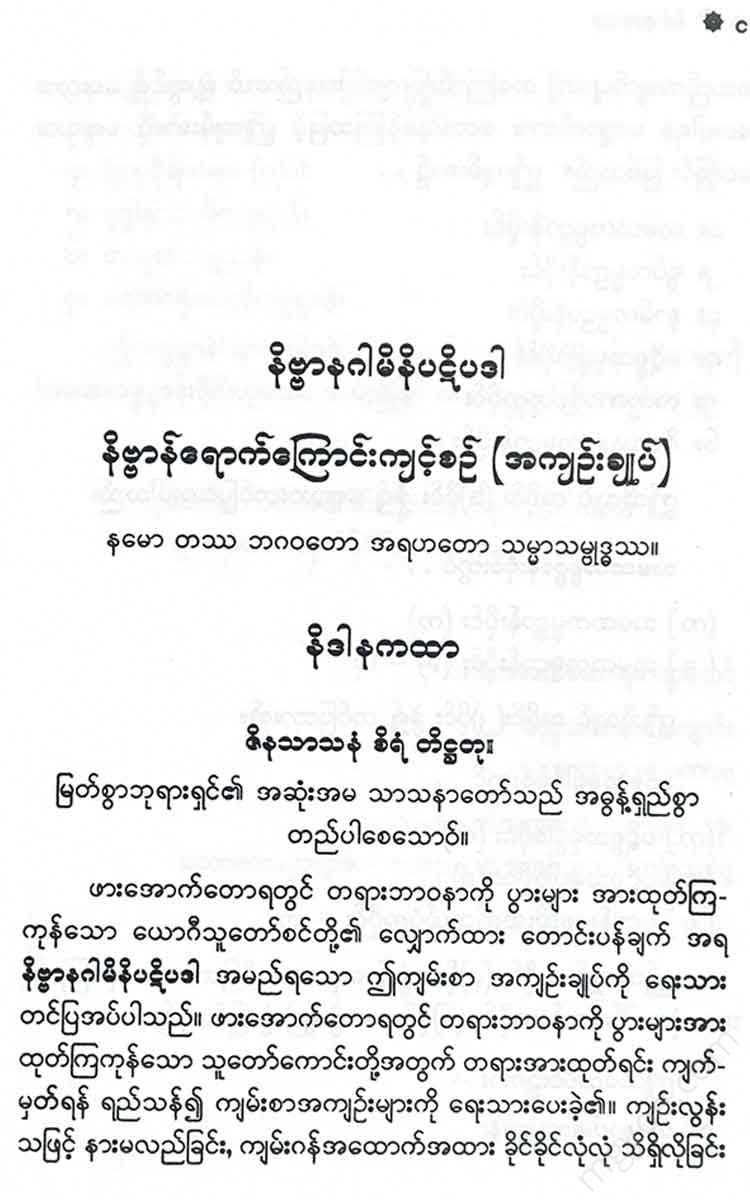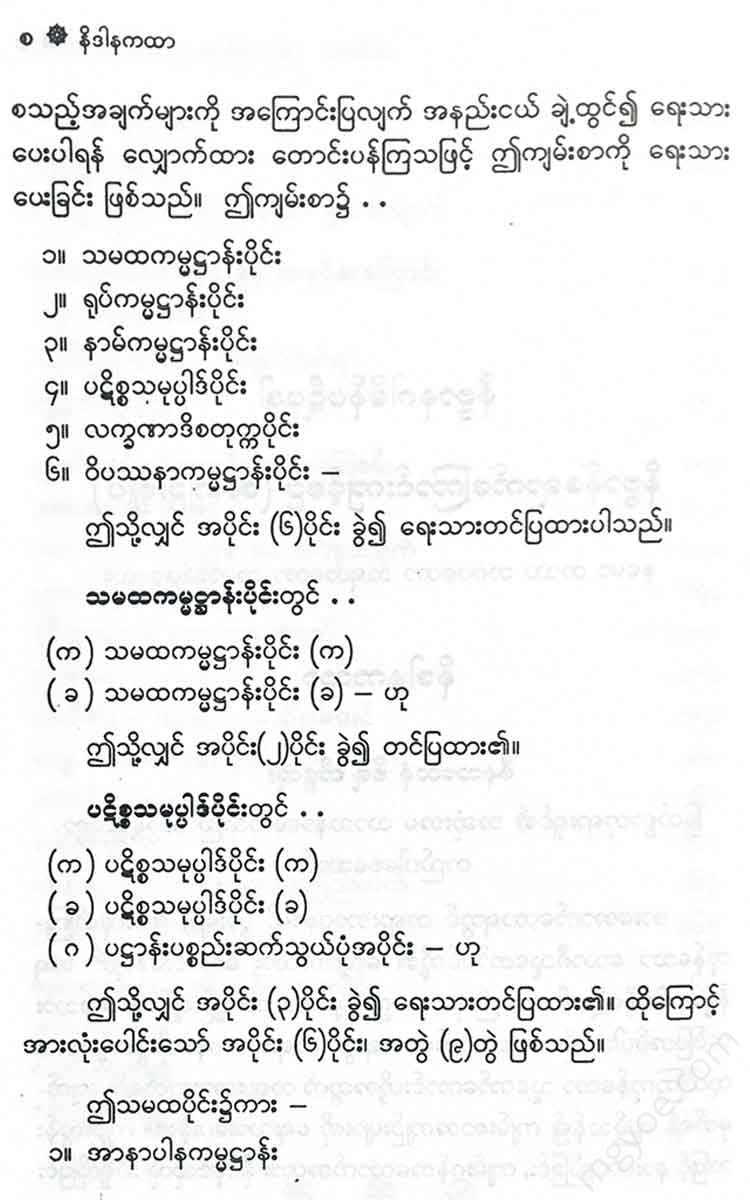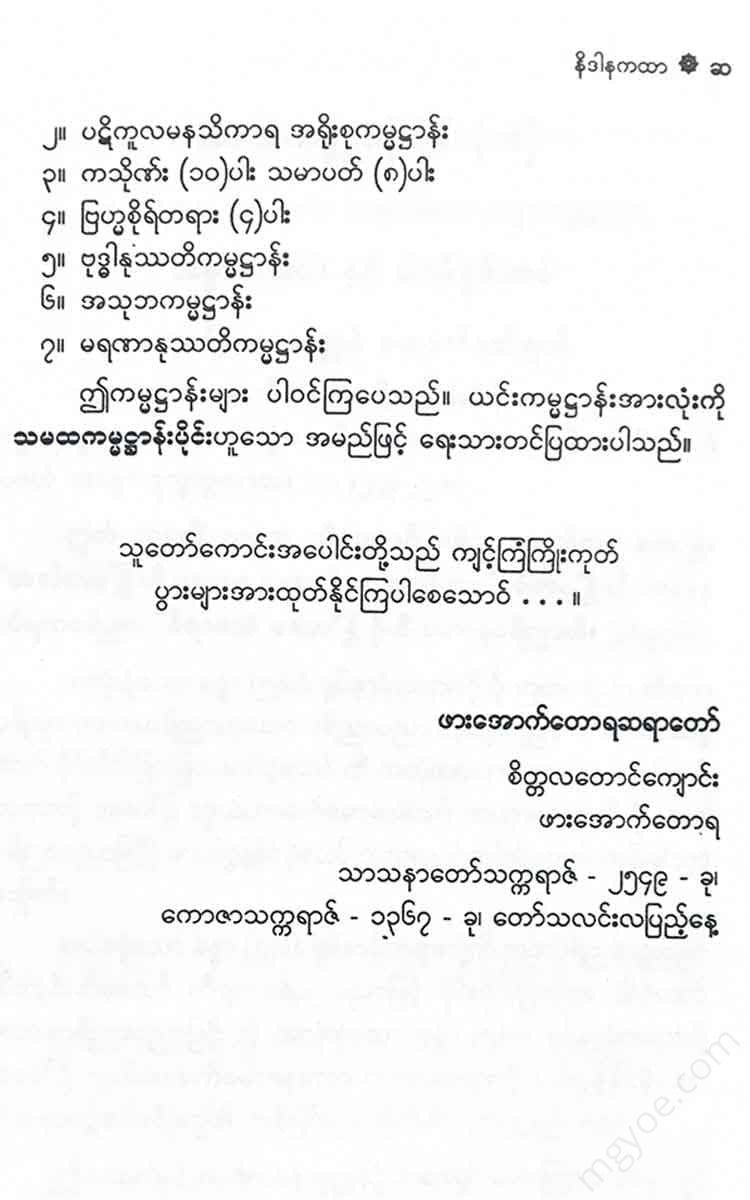Other Websites
Venerable Phor Aok Tora Sayadaw - The Practice of Attaining Nibbana (Summary) Volume (1)
Venerable Phor Aok Tora Sayadaw - The Practice of Attaining Nibbana (Summary) Volume (1)
Couldn't load pickup availability
The whole Bhikkhu, the one who is not abhijanam
In the Imaṣmi Sutta, the threefold path is explained. “Abhiṣānu” is the path of the āyāta, “parīsānu” is the path of the āyāta, “dīrājaṃ parama” is the path of the twofold path of the āyāta. (Sam. 8:36.)
If one does not know all the five aggregates of form and name through the three kinds of knowledge: the knowledge of mind, the knowledge of consciousness, and the knowledge of the world, and if one does not know them separately, and if one does not abandon the craving that clings to all the five aggregates of form and name (through the knowledge of the world), one is not fit for the cessation of the suffering of samsara.
If one has understood all the five aggregates of form and name through the wisdom of the mind, and has distinguished them through the wisdom of the senses, and has abandoned the craving for all the five aggregates of form and name through the wisdom of the senses, then one is fit for the cessation of suffering in samsara. (Sam, 2, 249-250.)
As the Buddha said in the above Aparijanana Sutta, any yogic practitioner who wants to be completely free from the suffering of samsara must strive to understand all the five aggregates of form, name, and mind through the three types of knowledge. In doing so, a good practitioner must be able to accept the eightfold path as the path to Nibbana.
Among the eight paths, right view, right concentration, and right livelihood are the path of virtue, right conduct, right action, and right mindfulness, and right concentration are the path of concentration. The moral conduct, concentration, and wisdom practices enumerated in these eight paths are the practices that lead to the liberation from the cycle of existence, called the Niyā-nikāpatīpadā. These are the ethical practices that must be practiced by anyone who wants to attain Nibbāna.
(4) types of people
It is also important to know that there are four types of people in practicing the eight noble virtues.
1. A person who is a religious person
2. A person who is ignorant of the five senses
3. The person
4. Supreme Being
Thus, there are four types of persons. (An, 1, 452. Abhi, Puggala Kyaing, 107.)
1. A person who is knowledgeable - A person who has a thorough understanding of the Four Noble Truths, which are related to the Four Noble Truths, and who is able to attain the state of Arahantship by constantly directing his mind to the teachings, and who is able to do so by sending forth his wisdom.
2. A person who is knowledgeable in the fivefold insight – When one has the opportunity to hear a sermon that is expounded in detail on the Four Noble Truths, such as the Dhammasakapavattana Sutta, the Anatalakkana Sutta, etc., and is able to send one's mind after the sermon, and to practice and develop it, thus penetrating and realizing the Four Noble Truths, one is said to be a person who is knowledgeable in the fivefold insight.
3. A person who has the opportunity to hear the Dhamma discourse on the Four Noble Truths, either in brief or in detail, but who is unable to understand the Four Noble Truths by simply listening to the Dhamma, and who, after listening to the Dhamma, practices the Eightfold Path, namely, morality, concentration, wisdom, and mindfulness, step by step, as revealed in the Dhamma, is called a person who can understand the Four Noble Truths and enter the state of enlightenment.
4. A person who is not a perfect person – A person who hears the Dhamma related to the Four Noble Truths, either briefly or in detail, but who cannot understand them by just hearing them, who cannot penetrate the Four Noble Truths, and who, after hearing the Dhamma, systematically practices the Eight Noble Paths and the Noble Dhamma, but cannot penetrate the Four Noble Truths in this life, is called a perfect person.
Even if one cannot enter the realm of the pure, one cannot fully grasp the Four Noble Truths, but by systematically practicing the Eight Noble Truths, one can obtain the seeds of perfection. This is the kind of person who is like the Siksa-Privoj.
Among these four types of people, the one who is knowledgeable in the four noble truths is one who can understand the four noble truths by simply hearing the discourse on the four noble truths in brief, and the one who is knowledgeable in the five noble truths is one who can understand the four noble truths by simply hearing the discourse on the four noble truths in detail. The time for such people to practice the eight noble truths in this life is the time they are listening to the discourse. In a very short period of time, they are able to practice the eight noble truths perfectly and thus enter into the state of enlightenment. These people are generally the noble ones who have attained the enlightenment of the path of enlightenment. They are the arahants of the path of enlightenment. The great sage's knowledge of the path of the Buddha is pure and pure for the following (5) reasons. These are the qualities that a great sage who is a master of the path of the Buddha must possess. These qualities are described in the Visuddhimagga Atthakatha (Vishuddhi, 272).
Tuesday (5)
1. Adhigamā - Adhigamā is the attainment of the noble state called the realm of the righteous and the arahantship called the realm of the righteous. Only when the great Buddha attained the noble state called the realm of the righteous did he, in the teachings of the ancient Buddhas, perform meditation on the way to alms-giving, perform meditation on the way back to the monastery from the alms-giving village, perform meditation on the way back to the monastery, and perform meditation on the way back and forth. He practiced the gaṭapāsāgaṭika etiquette, and he practiced the samāṭha vipassana, bhāvana, and kamma, and he practiced the samāṭha vipassana, bhāvana, and kamma until he reached the sāṇkārupekka jñāna, which is close to the anuloma jñāna, the gotra, and the bhuṇkā. This is called pubvayoga. (Visuddhi, 2,72. Mahakti, 2,84.)
In the Sammoha Vinodani Atthakatha, the elements of adhigamā, pariyatti sāvana, and paripussa are explained in the same way. However, in the element of pubvayoga, it is explained like this.
The name of the Buddha is the Buddha's name, the name of the Buddha's name
In a past life, when going from the monastery to the village for alms, one went with the meditation and developed the meditation, and when returning from the village for alms, one returned with the meditation. Having the meditation, which has been stored up and has been distinguished by wisdom, is called Pubbha Yoga. (Abhi, 2, 372.)
Here, only the practice of the practice of the pubhayoga in the past life is explained. It does not distinguish between the past life in the teachings of the ancient Buddhas and the past life in the teachings of this Buddha. In the section on practice, it is explained only as the contemplation of the formations (Abhi, 2, 373). It does not specifically explain the knowledge of the formations. Therefore, whether in the teachings of the ancient Buddhas or in the teachings of this Buddha, in a past life that has passed away, the five aggregates of suffering, known as the new material, and the causes of ignorance, craving, attachment, and mental formations, known as the truth of the universe, all of which are the causes of these two aggregates, with the three vehicles of perception, know that insight knowledge is called pubbhayoga.
The one who is the cause of the suffering, the
Of the five causes that have been presented, these three factors, namely, the high and low levels of the knowledge of the senses, are the only strong factors that determine the degree of differentiation. The factor of the sambhida is the strong factor that determines the noble path, called adhigam. If this is the case, the question arises whether the sambhida is no longer the cause of the high and low levels of the knowledge of the senses. The answer is yes. However, just as the Pubva Yoga aspect is a powerful underlying cause of the noble path called Adhigam, it is not a powerful underlying cause of the various levels of the knowledge of the patisambhidas, such as their high or low levels. (It is not a powerful underlying cause. It means that it is a supporting and supporting cause.)
The three causes of attachment, attachment, and attachment to the Buddha, whether they exist or not
The reason for yoga is that, whether in the teachings of the ancient Buddhas or in the teachings of this Buddha, whether in the past life or in the present life, without the practice of insight meditation, which is the practice of contemplating the three characteristics of impermanence, suffering, and nothingness, and examining them, it is impossible to attain the knowledge of the arising Therefore, the characteristic of pubvayoga is not the powerful underlying cause of the various differences in levels of the knowledge of the patisambhida, such as high or low levels, but it is a supporting and supporting cause of the uppatthamba.
(Abhi, Vedas, 2, 372-373. Mulakti, 2, 193.)
